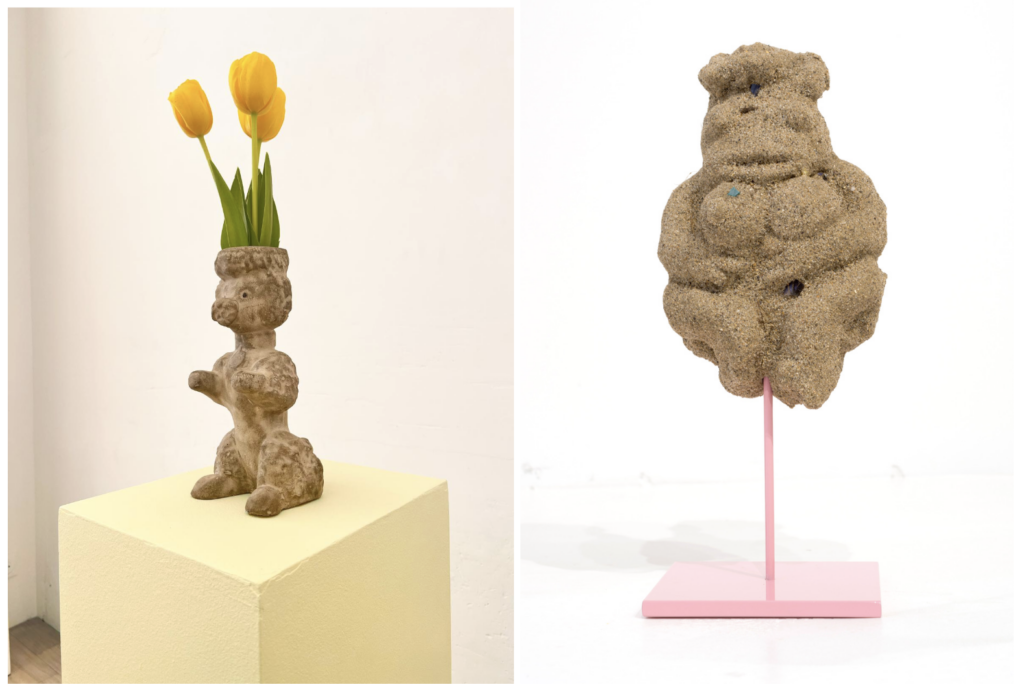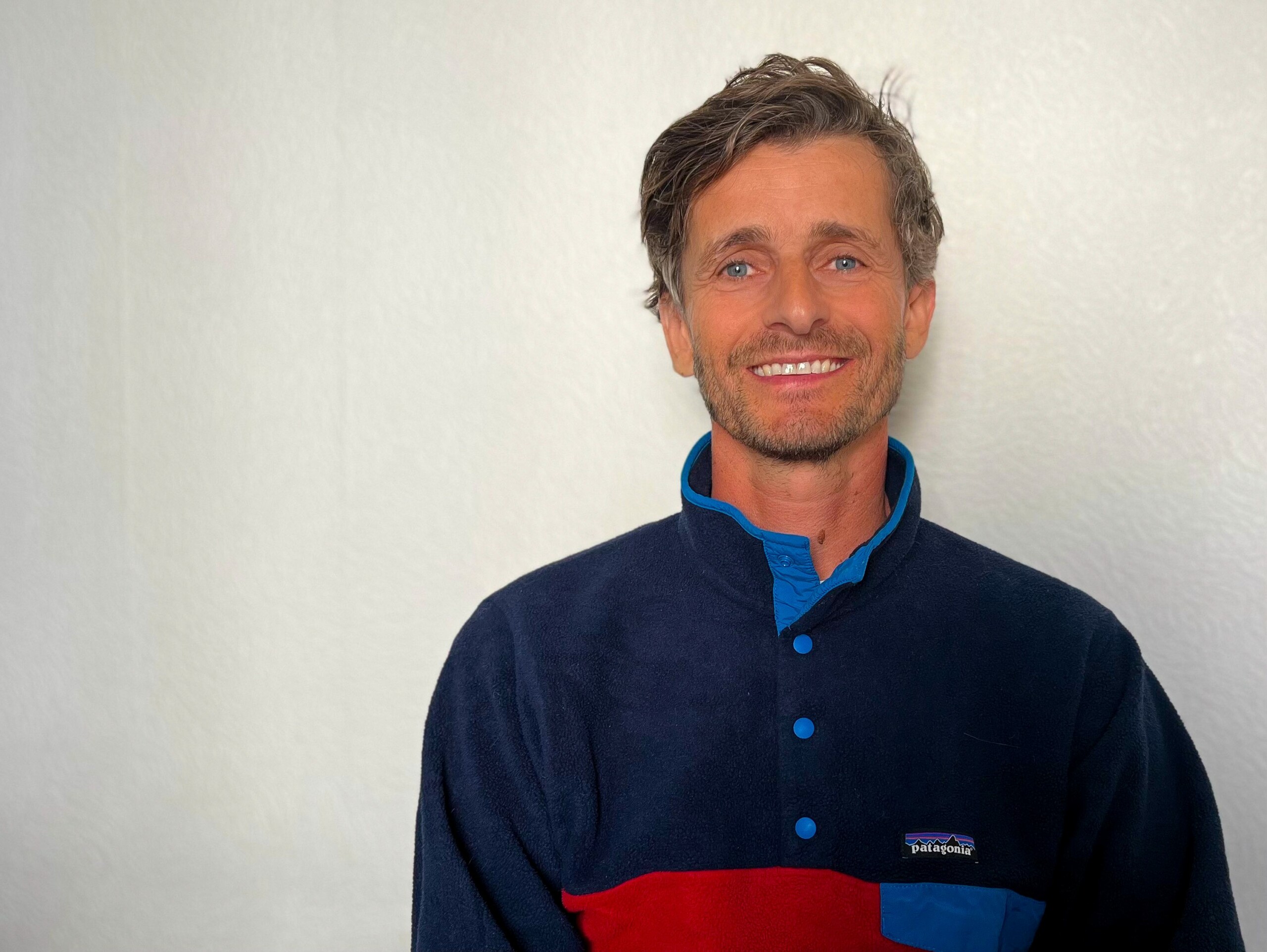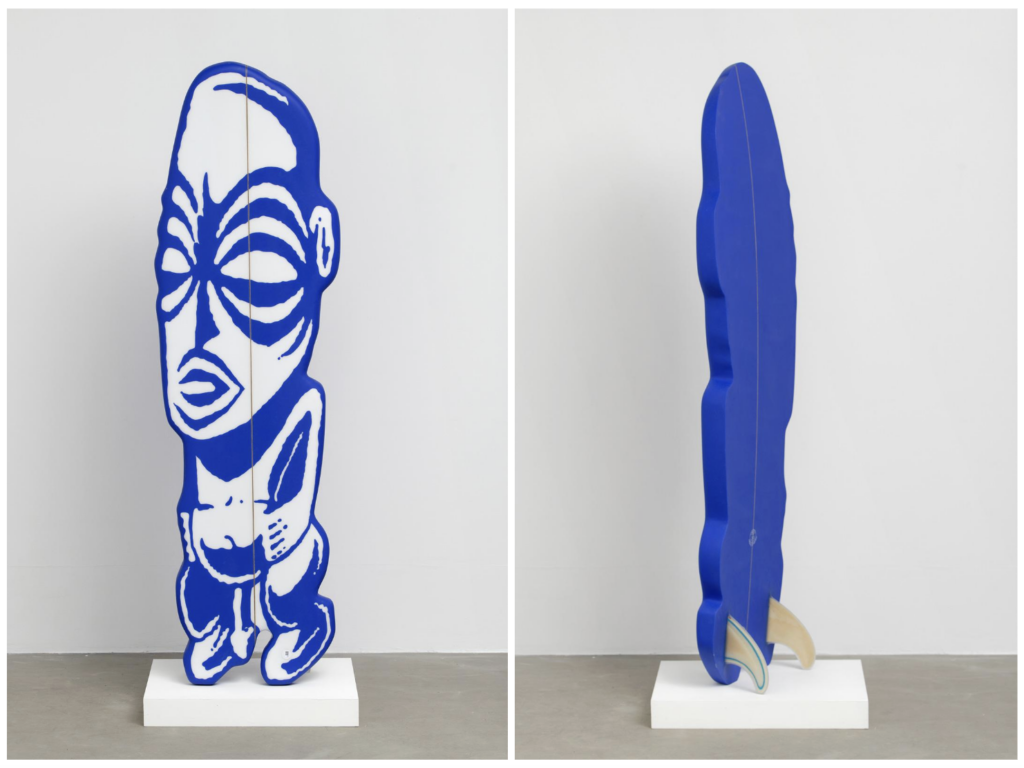Artist and surfer Olivier Millagou (b. 1974, Toulon), based in Bandol, France, shares his philosophy of art as a sustainable practice – combining localism, ecology and a sparing approach to creation.
You’ve adopted a frugal way of living and creating, inspired by your passion for surfing. How did the link between the two come about?
Surfing and art are my two passions. I’ve been linking them since I graduated from the Beaux-Arts in Marseille. I use the principles of surfing in my daily life and in my artistic practice.
With surfing, you’re confronted with an element that’s much bigger and stronger than you are, and you learn with humility to deal with it, never against it. When you share a wave with the element and it accepts you, it’s an intense joy, which I also find in art. When there’s no wave, it’s the same. It’s nature that decides, not us. I do exactly the same thing in my artistic work: I deliberately don’t have a studio, I work at home or on the beach, I do a lot of drawing and writing. I file away my ideas, my notes, and I wait for the project that will trigger the action. When this happens, I go straight to work, drawing on resources in situ, what I find on the beach near my home and what comes to me. I’m not a craftsman, I don’t try to be, I don’t aim for the perfect gesture. I’m not interested in producing for the sake of producing. It’s the project that leads to production, otherwise for me it’s a waste.
My artistic approach is always contextual and almost never personal. It starts with a place of residence or exhibition and is intrinsically linked to it, its volume and its resources. I often transform my solo exhibitions into group shows, as surfing also teaches me to be less about ego and more about relationships. Depending on the type of talent that joins me, the exhibition catalogue could become a comic strip, or music is invited into the exhibition.
Olivier Millagou, Miki (2018), surfboard sculpture, resin, acrylic, fiberglass, wood © Aurélien Mole, courtesy Galerie Sultana, Paris.
How do you go about promoting short-circuit artistic production?
I live near the sea in Bandol, a small village in the Var region of France. It’s a lifestyle choice, deliberately far from the artistic centralism of Paris. I work on a small-scale production based on the development of a territory. My production has always been based on localism and on research within a reduced perimeter, which I’ve been trying to minimise more and more for over 12 years now to highlight this principle of surfing: where you make do with what’s around you. For me, this voluntary reduction in production is a philosophy of life.
My most recent works have been based on waste collected on beaches or on out-of-date products salvaged from commercial rubbish bins. In my sculptures, I also use objects that can be returned to their original function after installation, such as flower pots. Once the exhibition is over, they return to my garden. If the work has to be redone for another exhibition, I take the pots back and start again. I’ve made sculptures out of surfboards, which I still surf with today. I always try to find a trick so that the artefact can have a second function.
 Olivier Millagou, left: Sculpture périmée (Caniche) (2023), chemical seal, and right: Varappe (2019), plaster, sand, pink enamel base © courtesy Galerie Sultana, Paris.
Olivier Millagou, left: Sculpture périmée (Caniche) (2023), chemical seal, and right: Varappe (2019), plaster, sand, pink enamel base © courtesy Galerie Sultana, Paris.
Together with Toulon designer Antoine Boudin, you won the Mas Baudran residency with your project “Déplastification” on the theme of pollution. How did you develop this project?
We designed the project “Deplastification” for the new Mas Baudran residency in Arles with the aim of creating an emblem around which all those who take action for the environment, even in simple, everyday ways, can rally. With the help of legal expert Sébastien Mabile, co-founder of the residency, we also want to put the term “deplastification”, which we feel is essential, into the dictionary, just as the word “decarbonation” was added into the French Larousse dictionary. We’ve also been working on objects, artefacts and teaching aids for Surfrider Foundation Europe, which fights against ocean pollution. The idea is not so much to produce a work of art or a design object, but rather an artefact with an educational role.
So if we come and visit your studio, do we also get to go to the beach?
Yes, come and visit ! I can’t promise you a workshop tour because there aren’t any, but we could have lunch together, have a drink, go surfing and collect garbage!
Olivier Millagou, Arnaud (2020), molten polystyrene in aluminum © courtesy galerie Sultana, Paris.
Authors: Eliza Morris and Alice Audouin
Translation: Eliza Morris
September 2024
More information on Olivier Millagou, represented by Galerie Sultana: here
Cover: Olivier Millagou © Art of Change 21 – Eliza Morris
Subscribe to Impact Art News (free): here
Impact Art News, September – October 2024, #50



